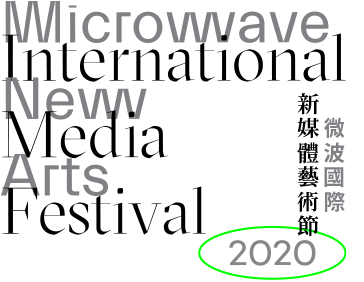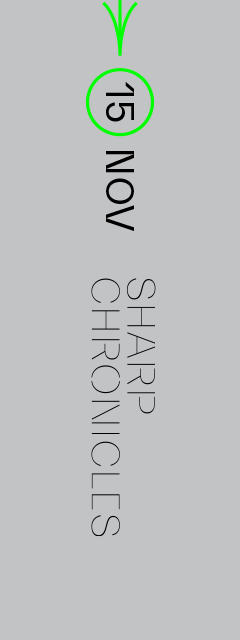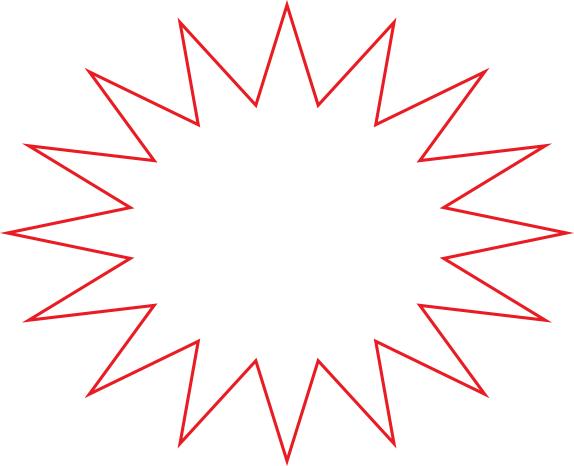







When contemporary technology gives birth to the virtual body – a fresh sensory system co-created by the corporeal body and programmed machines – it manifests its existence in the form of ambiguous, elusive “ghosts.” It is characterized by an “absence” that suspends all “presence” and legitimate power structures as well as regular, habitual living experiences. This renders all that is “present” incapable of encoding, categorizing and controlling the “absent” ghosts; contrarily, the “absent” ghosts launch a total deployment and control over everything that is “present.”

The death of a great or a savior figure might be viewed as a dividing point between the new and old worlds. Death is not merely the end of physical life. It also indicates the sublimation and continuation of existence, a transition from the physical body to the virtual “ghost.” Therefore, the death of a great, a savior figure could be sensationalized and virtualized by frenetic followers, deifying the figure into a being with the power of redemption. “Ghost” is the continuation of life, ubiquitous and haunting. It infiltrates and permeates our subconscious, expanding into a multi-dimensional space of “microscopic power.”
Contemporary technological governance, at any given time, is “the invisible arrivant.” As governance technology advances in time, it lurks deeper, becoming ubiquitous and free from all rules. It manifests in unexpected contents and forms. It unrestrainedly infiltrates matters, domains, individuals and consciousness that it attempts to control and monitor, cancelling our privacy at any time and depriving us the freedom to survival while realizing full infiltration from the virtual realm to the physical world and achieving a total control over human consciousness and soul. Contemporary political powers take turn to evoke the spirits of “savior figures” and utilize “the faith and truth that is yet to come and yet to realize” to extend and enhance governance technology. The combination of contemporary technology and authoritarian regimes will give rise to a “ghost-like,” super-efficient governance system that is ubiquitous and unprecedented, surpassing the Orwellian totalitarianism.

Wandering Ghost No.5 is a VR experience installation that moves vertically. It requires audiences to put on VR goggles and stand on a mechanical platform that slowly ascends into the virtual gigantic red dome.
The work reveals a virtual image of a massive radar, beckoning at information-gathering surveillance radar system operated by national capital—this is the artist’s interpretation of how the “virtual reality” entirely replicates political and social systems in the physical world. It becomes a new form of technological authoritarian system that creates resistance between power center and the peripheral as well as tension between dictators and those fighting for freedom in the virtual network. As modern man longs to hold onto freedom, he must become a “ghost” to frequently switch from one virtual space-time to another in order to escape the virtual apparatus and its governance. However, we can never be sure if contemporary technology is leading us towards a utopia of technology or a perfect totalitarianism. The efficiency and power of contemporary technology allows cotemporary politics to utilize fully the effectiveness and concealability offered by technology to enhance and expand its control – the total control that is far more powerful and fierce than traditional authoritarianism – over the state and its people.
如幽靈般的虛擬身體
「真實」是什麼?「現實」是什麼?現實是當你停止相信它之後,它卻依然存在的,它是獨立存在於你思維之外的東西

當代科技形成的虛擬身體,是肉體與機器、程式共同創造的嶄新知覺系統,將以一種隱晦的、無法捉摸「幽靈」的面貌出現,來預示祂的存在。這種「不在場」,懸置了一切「在場」的、合法的權力結構,懸置了我們習以為常的生活經驗。使現有一切的「在場」無法對「不在場」的幽靈,進行編碼、分類與控制,反到是「不在場」的幽靈,展開對於「在場」的一切,進行全面部署與控制。
無所不在的「幽靈」場域
一位偉人、救世主的死亡,可以作為新世界與舊世界的分界點。死亡不僅僅是結束一個生命而已,死亡也代表存在形式的昇華與延續,從物質肉體轉化為虛擬的「幽靈」。因此,救世主、偉人的死亡,在狂熱的信徒的煽動下,將生命虛擬化,成為具有神格的心靈救贖者。「幽靈」是祂的生命延續,祂無所不在、陰魂不散,滲入我們的潛意識裡,擴延出多維度的「微觀權力」空間。
當代科技治理之術,在任何時候都是一種「看不見的來臨者」,治理技術隨著時代的推進,變得越來越潛伏,越來越沒有規則,而且無處不在,隨時以人們意想不到的內容和形式現身,肆意滲入它欲控制和監管的事物、領域、個人、意識之中,使得我們隨時都有可能被驅趕出自己的私密領域,被剝奪生存的自由,實現從虛擬到實體的全面滲透,對意識與靈魂的全面控管。當代政治輪流召喚「救世主」「偉人」的英靈。一種「從未到來、尚未實現的信仰與真理」以便延展、增強統治技術。使得當代技術加上威權專制,將超越歐威爾式極權,形成一個像「幽靈」般,無所不在、前所未有的超高效統治系統。


《徘徊的幽靈No.5》為上下移動的VR體驗裝置。觀者需站立於動力裝置的平台上,穿戴VR眼鏡,緩慢地向上移動至巨大虛擬的紅色巨網中。
《徘徊的幽靈No.5》以巨型雷達作為擬像,意味著搜索情資的監聽雷達系統,建立於國家資本的運行機制上。以此詮釋「虛擬現實」完全復刻了實體政治、社會的體制,轉變為新型態的科技極權系統,在虛擬網路中,形成權力中心與邊緣對抗、獨裁者與自由人對抗。我們希望保有自由之身,必須像「幽靈」一樣,頻繁地切斷、切換不同的虛擬時空,隨時逃逸虛擬統治的機器。然而,當代技術將帶領我們走向科技烏托邦,還是走向完美極權?當代技術的效率與威力,使得當代政治可以充分利用技術力量的有效性與隱密性,加強對國家與人民,進行遠比傳統極權治理更加兇殘的全面管控。
Artist biography 藝術家簡介
Tao Ya-Lun, who is pioneering new media arts in Taiwan, is serving as a full-time faculty member at College of Communication of National Chengchi University. Invited to the 9th Contemporary Audio-Visual & New Media Arts Festival (MADATAC) in Madrid, Spain, and won the New Media Art Installation Award. Granted by Taiwan Fellowship Program of Asian Cultural Council to visit the United States as exchange scholar, invited to be the artist-in-residency by Headland Center of the Arts in San Francisco and sponsored by Hong Kong Arts Development Council to be the first artist-in-residency at 1a space. He took up residence at Nordic Institute for Contemporary Art that is famous for digital images and technology arts as well. Honored with the first prize of the scholarship program from Cite Internationale des Arts, Paris, and was awarded outstanding alumnus of Tainan National University of the Arts.

國立台灣師範大學美術系學士。
國立台南藝術學院造型藝術研究所第一屆碩士。
現任國立政治大學傳播學院教授。
為台灣新媒體藝術的先鋒。曾獲MADATAC馬德里當代科技與影音藝術大獎、台灣當代藝術最具代表性的台北獎、台北縣政府獎;代表華人藝術界最具有當代藝術精神的李仲生當代繪畫創作獎,為歷屆最年輕的得獎人;為美國亞洲文化協會(洛克菲勒兄弟基金會)台灣獎助計畫之受獎人,以交換學者身分赴美參觀與訪問;獲美國舊金山赫德蘭藝術中心Headland Center for the Arts邀請為駐村藝術家;受香港1a space藝術空間邀請與香港藝術發展局贊助,為1a space第一位駐場藝術家;以及數位影像與科技藝術頗負盛名的北歐當代藝術中心Nordic Institute for Contemporary Art之駐場藝術家;獲巴黎西帖國際藝術村工作室獎學金第一名;受波士頓市政府之邀為波士頓交換藝術家。
獲西班牙MADATAC邀請個展於馬德里Media Lab Prado。西班牙San Lorenzo del Escorial市長邀請,個展於該市文化中心。2009年獲奧地利林茲OK center邀請,於該中心舉辦大型個展。並曾受邀個展於台北數位藝術中心、台北市立美術館、北歐當代藝術中心、香港視覺藝術中心、舊金山赫德蘭藝術中心、關渡美術館、伊通公園、双方畫廊等地。
作品亦受邀展出於雅典數位藝術節。雅典SYNTOPIA電子藝術展。德國威瑪藝術節。意大利威尼斯雙年展。柏林transmediale跨媒體藝術節。美國聖塔菲國際新媒體藝術節。波蘭波茲南(調解)雙年展。巴黎EP7藝術空間。北京中國美術館、北京山水美術館、上海藝倉美術館、韓國光州市立美術館、首爾市立美術館、廣東美術館、香港藝術中心、澳洲黃金海岸市立美術館、橘市美術館、坎培拉Drill Hall美術館、雪梨大學美術館、墨爾本皇家科技學院美術館、伯斯P.S Art space、伯斯弗里曼特雙年展、紐西蘭威靈頓Aden美術館、紐約台北藝廊、紐約The Sylvia Wald and Po Kim Art Foundation、意大利米蘭國立藝術學院、芬蘭北歐當代藝術中心、馬尼拉菲律賓文化中心、北京索卡藝術中心、台灣美術館、台北市立美術館、高雄市立美術館、台北當代藝術館、帝門藝術中心、伊通公園、鳳甲美術館、双方畫廊、忠泰美術館…等地。

Tao Ya-Lun
陶亞倫